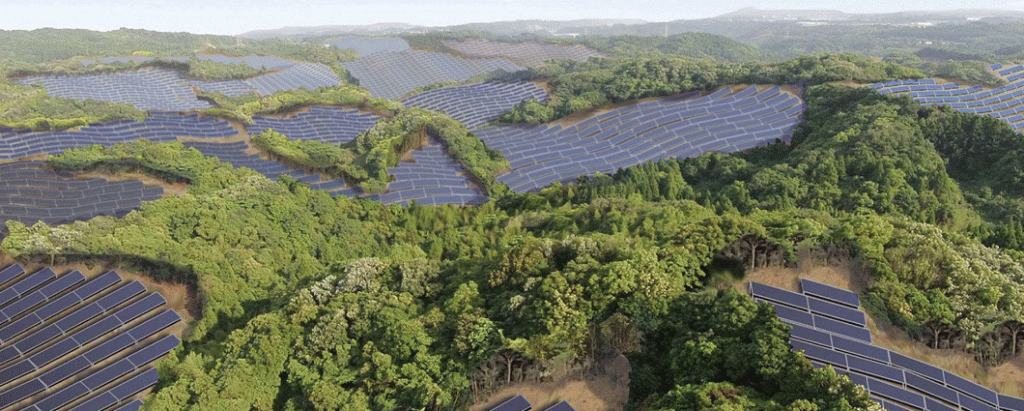Japanese electronics manufacturer, Kyocera, is making use of empty golf courses around the country by repurposing them as massive solar power plants.
During Japan’s real estate boom of the 1980s and 90s, developers built hundreds of golf courses around the country to compete with the spike in interest of the sport, which was at an all-time high during that period.
Of course, when booms go bust, we are left to deal with the aftermath. Along with Japan’s bubble economy bursting in the 1990s, the popularity of such a status-centric sport as golf unsurprisingly declined rapidly as well. Although having leveled out in recent years, participation in the sport has fallen by around 40%, resulting in the abandonment of over 600 golf clubs around the country.
Enter Kyocera.
The Japanese electronics manufacturer has found a way to capitalize on this unique situation while also providing a much-needed alternative to nuclear power—which, post- the 2011 Fukushima disaster is a welcome proposal.
Construction has begun for a 23-megawatt solar power plant in Kyoto Prefecture which will be housed on a site previously designated for swinging clubs and trying to impress the boss by “making par.” According to Kyocera, “The plant will generate an estimated 26,312 megawatt hours (MWh) per year—enough electricity to power approximately 8,100 typical local households.”
Another project being spearheaded by Kyocera is also in the works, with plans for a 92-megawatt solar power plant in Kagoshima Prefecture underway. The site was also originally created for a golf course more than 30 years ago but will now be put to use in a particularly productive and environmentally friendly manner.
With many unused golf courses around the US being considered as housing, industrial and commercial development sites, Kyocera is taking a more creative approach that takes advantage of the natural characteristics of the “expansive land mass, high sun exposure, and a low concentration of shade trees” (Kyocera).
Together, these two major projects will have a combined output that will be able to power nearly 40,000 homes.
—Chris Zajko
Image: Discovery









